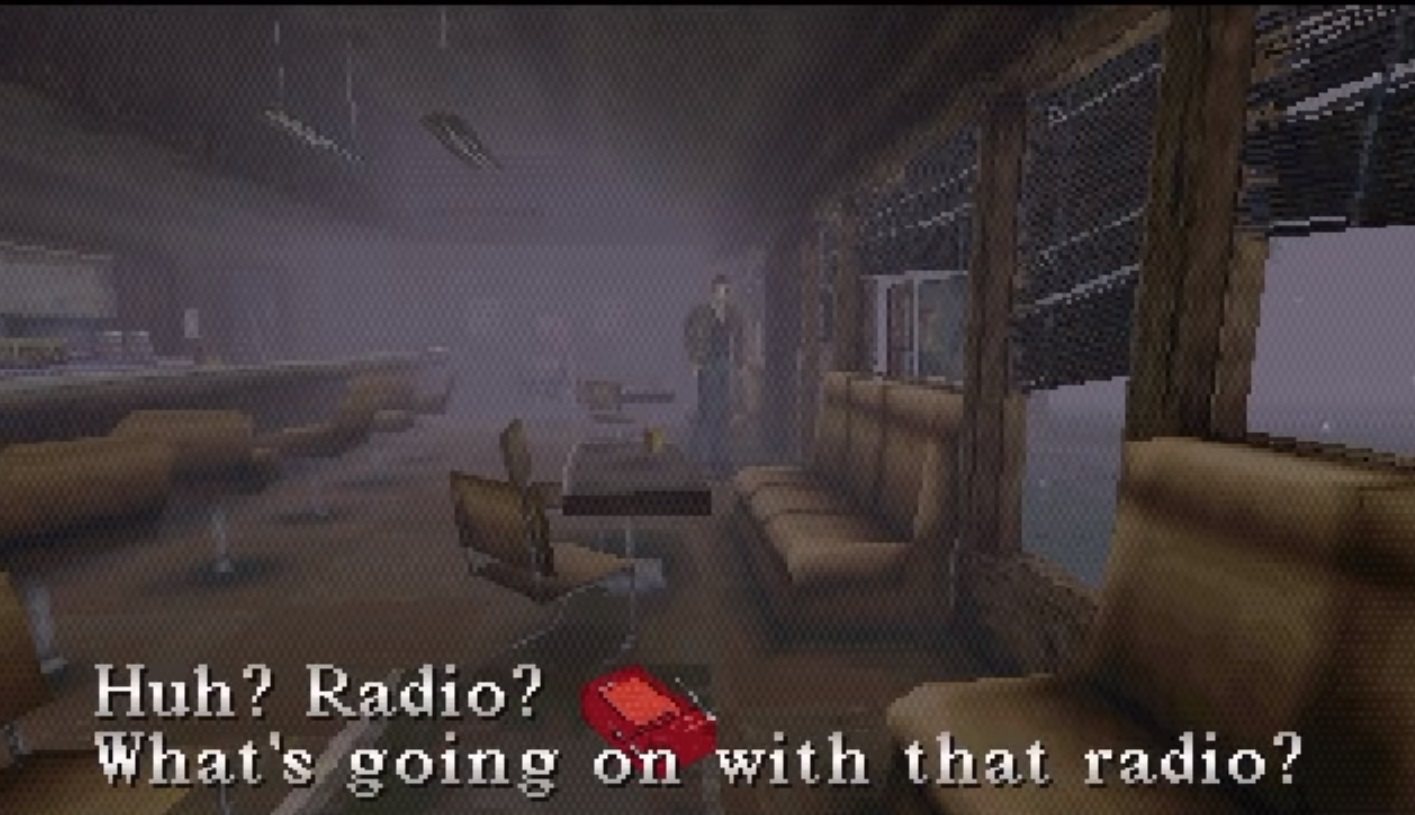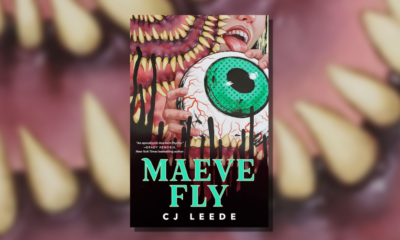
Silent Hill • Putting the ‘Hill’ in ‘Chills’
More Videos
Published
4 years agoon
By
Jake Neville
We’re back on the PS1 this week for a landmark achievement in gaming. Not only are we celebrating the revered first installment of the Silent Hill series, but we are also celebrating my first ever playthrough of the game! ‘First ever?’ I hear you longtime readers of my pen say. ‘But you are the king of survival horrors on the Play Station One!’ I hear you also say. Well, before I jump into any kind of review, it’s important to mention just how rare this game actually is and how hard it was to get my hands on it finally. This game easily goes for at least $80 AUD ($55 USD) secondhand and on retro gaming stores. The sheer scarcity of this game is a testament to its place in horror gaming. Not only is it a strong influence on future horror titles to come, but it is regarded by some as the penultimate culmination of all the survival horror titles before it during the genre’s boom on the PS1. Konami set out to create a Resident Evil of their own in 1999, and what they delivered was a completely unique and unforgetably terrifying experience that would birth a devoted cult following and some of gaming’s most memorable moments.

What the fog is going on in this town?
The player inhabits the character of widower Harry Mason who has come to the town of Silent Hill on a vacation with his daughter, Cheryl. But when the game starts, Harry crashes his car and when he wakes up he finds that Cheryl is missing. Thus begins Harry’s adventure (ordeal?) in the abandoned and ever-foggy town of Silent Hill… that is also overrun with monsters for no actual reason (they might be a manifestation of a nightmare, but who’s to say?).
The plot is simple, and thank Samael, because the lore and backstory that encompasses the town and explains why it is the way it is is thorough, deep, and multi-faceted. This is where the game shines in that aspect. Diary entries are far and few between to fill in story gaps, and it isn’t until the final third of the game that the player is clued into what is happening, other than the obvious fact that there is some kind of demon rite, culty aspect to the story. The fact that the game leaves the whereabouts of the people, the reason why the town is half-foggy half-iron-hellscape, and if any of the strange and abstract horrors are actually real, enhances the experience by prompting the player to fill in the gaps with their imagination and interpretation. As for the actual narrative, it serves more the purpose to take Harry to spooky locations like a demon-amusement park, an abandoned school, and a disgusting hospital.

Non-descript monsters galore!
As is the way with survival horror, much of the game is built on exploration, puzzle solving and combat. Interestingly, Silent Hill does not challenge the player to manage inventory, likely due to Konami’s interest in distancing themselves from Capcom. And they do! While the game does feature puzzles and key item collection, it isn’t set up so much in the escape room way that Resident Evil is thanks to Silent Hill‘s semi-open world experience. Instead of a mansion to explore, the entire town of Silent Hill is your mansion, and within that is the aforementioned mini-mansions like the school and hospital. Since Harry has an entire town to be able to traverse, he is generally very fast moving, and so are his enemies.
The game is not a zombie game, it’s a supernatural horror, and as such the enemies are very not of this world. Harry comes armed with a variety of useless melee weapons and some uninspired and difficult to fire guns to fight against cockroaches, dogs, big-clawed moles, grasshopper lizards, and I think gorillas, that all keep him on his toes. Aside from the end boss and the possessed nurses, many of the game’s enemies and bosses are quite lazy in design and don’t really fit in with the world, which I felt detracted from the experience instead of enhancing it in the abstract horror way you’d expect of the psychological horror Silent Hill is founded on.

Drag me to hell and back, and then to hell again, and back one more time
The strongest aspect to the Silent Hill experience is the atmosphere and the various horror elements it is built on. Due to the limit of the PlayStation One’s processing power, and due to the exciting fact that this game is rendered entirely in-game (not a pre-rendered 2D background or asset in sight!), means that the player can only ever see a few metres ahead of them at any given time. This limitation is the explanation for the game’s ever-present fog and darkness and serves as such an unsettling source of atmosphere for the game that the town is synonymous with its fog now. In conjunction, Harry carries a radio with him that has the benefit of crackling softly when an enemy is nearby heightening the eeriness of the fog evermore.
Conversely, the hellscape that Harry is brought to again and again warps the town into a strange and bloody iron fortress that is so grotesque and filled with such disturbing imagery that it is hard to ever wipe the mind of the impacting PS1 graphics. But none of this would work so well if it weren’t for the soundtrack that is most times atmospheric and at the same time avant-garde in its atonality and use of unconventional instrumentation, leaving the player deeply rattled the whole way through. And the times that the game isn’t trying to drive the player insane with its mind-melting dimension swaps and spooky atmospheres, the title is home to some of the most beautiful and melancholic arrangements I’ve ever heard from a video game (Lisa Garland, I’m looking at you).
Good + ending
This game is good. It’s good plus. It’s great. It’s a classic. It has everything going for it, especially its unique use of supernatural and psychological horror that was relatively unseen until its debut in gaming and its visionary new game plus system combined with multiple endings leading to plenty of replayability. But it’s a very serious game. It is dark and grim and rooted in tragedy. Fans of the series know that the game does have a few hidden silly moments, but that was probably my least favourite aspect of the game. It is unrelenting in its depressive tone and the game feels hopeless, and for me at times it lead the game to feel unfun. Overall it was enjoyable and was a fantastic horror experience, and the fact that the game actually made me feel hopeless should be a massive plus but it did make the drive to finish the game difficult. Outside of this and my opinion on the uninspired enemies, this game is perfect and is a must-play for all horror officianados. Four Cthulhus out of five. More to be read here.
 (4 / 5)
(4 / 5)
You may like
Next in my journey of all the cool games I saw at PAX, Quest Master! Quest Master is a love letter to retro dungeon crawlers and level designers. Taking inspiration from both Mario Maker and the Legend of Zelda franchise, Quest Master promises the ability to play and design dungeons with a variety of enemies, traps, and puzzles.
Check out the Quest Master game announcement here:
I was given a private 30-minute demo, where I got to try out some of the core features in a pre-beta version of Quest Master. This demo was led by one of the developers, Julian Creutz who shared some insight into the game design and user experience. My interview with Julian about Quest Master can be found here.
Quest Master has two main modes, playing dungeons and building them. I got to try out both, though I had a more comprehensive experience playing dungeons. While playing dungeons, the game mechanics were intuitive and simple. However, I was continuously surprised by the complexities offered by the puzzle and logic systems. For example, you can collect a boomerang which is incredibly easy to use. To solve one of the puzzles, I had to throw the boomerang through a torch (which I thought was just decorative) to catch the boomerang on fire and enable it to activate a gem. While the individual mechanics were basic, they combined into a sophisticated puzzle-solving experience.
Immediately, I was eager to look under the hood and see how the dungeon building mode enables the puzzle solving as previously described. Once again, I was impressed with the sophistication of a system with such simple mechanics. The controls for building weren’t intuitive for me, though I also don’t use a controller for much of my gaming (like I was during the demo). Additionally, I could see how it would be really easy to get accustomed to as you build.
As it was a short demo, I wasn’t able to try any of the multiplayer features (i.e. co-op, online map sharing) so I can’t speak to the success of their implementation. As this is supposed to be a large part of the game, I’m wary of wholeheartedly suggesting Quest Master for those interested in the multiplayer experience. However, I was impressed with Quest Master’s modern take on retro dungeon crawlers like the Legend of Zelda games. The graphics and controls feel like much needed quality of life updates for a system taking inspiration from older classics.
I recommend wishlisting Quest Master if you are a fan of old Legend of Zelda games or are looking for a fresh take on the dungeon builder genre. If Quest Master interests you, don’t forget to check out my conversation with Julian too!
 (4.5 / 5)
(4.5 / 5)
Check out my other PAX posts here!
Gaming
Interview with Game Dev Julian Creutz: Quest Master @ PAX
Published
2 weeks agoon
April 4, 2024
As mentioned in previous posts, I had the opportunity to demo a pre-early access version of the game Quest Master alongside the Lead Developer, Julian Creutz. Quest Master is a Legend of Zelda and Super Mario Maker inspired dungeon crawling and building video game. While the other post covers the game itself, this one covers the inspiration and vision for the game as told by Julian.
How did you become involved in video game development?
I’ve been a huge gamer, and especially a Zelda fan, ever since I was a little child when my dad put a GameBoy Advance with “The Legend of Zelda: A Link to the Past” into my hands. Sometime during elementary school I started dabbling with game development using visual tools like Scratch and GameMaker. I quickly got into making Zelda fan games and had dreamt of the day when I would make my own Zelda game one day. Over the years I’ve honed my game development and programming skills, resulting in where I am today.
What has been the most challenging aspect of the development process?
Developing Quest Master is essentially like making two games at once – the making and the playing part. Both of these game elements have to be equally as polished to form a cohesive one.
The most difficult thing by far about the game’s development has been to make the maker mode experience intuitive for first-time users and people who know nothing about Zelda-like games, but at the same time powerful and complex enough to allow creating anything you could dream of.
One good example is the gameplay feature to link certain parts to others, like linking a pressure plate to opening a door. We’ve been through countless iterations affecting both the visual, gameplay and user experience aspects of it – I hope that the one we are using right now is the final one!
Quest Master takes a lot of inspiration from classic dungeon-crawlers like the Legend of Zelda franchise. What about these games was so enchanting to you and how does Quest Master try to capture that enchantment?
As described earlier, I’m like the biggest Zelda fan, which I’m sure shows. My gripe with many Zelda-likes on the market is that none perfectly capture the feel of the classic entries… there’s always something missing.
I confidently believe that Quest Master differs from that greatly. We are trying to make Quest Master feel like an in-house 2D Zelda like Nintendo used to make, just from an indie team like ours. Many people crave the classic 2D entries, just like I do.
What emotions do you hope the player will experience while playing Quest Master? What design choices were made to assist in that desired atmosphere?
A big aspect of Quest Master is its local multiplayer. The game is deliberately designed to work flawlessly with that, and makers can create specialized puzzles in the game that require all players to work together for example. The result is both rewarding, funny, and sometimes infuriating altogether, for example when one of your buddies throws you into a hole.
As a community dungeon maker, what features are you most excited to see implemented in player-made dungeon crawls?
I’ve already been hugely amazed by the creations of the existing Quest Master demo. With all the new features the game will launch into Early Access with, I bet this will be tenfold. I myself always enjoy the brain busting puzzles people come up with. Other things I also like a lot are the unintended mechanics the players find, which dynamically emerge from the many, many gameplay systems working together.
What’s it been like working with Apogee, an indie publisher who goes back to the early 1990’s and has a long legacy of terrific game releases?
I’ve only had very few interactions with game publishers in the past, and Quest Master is my first large scale commercial game project. There’s preconceived notions floating around everywhere on the internet about how evil game publishers are and how much better you would be off self-publishing your game. Contrary to that, working with Apogee has been nothing short of supportive and family-like. They are very invested in the project, and they have many Zelda fans on the team also helps a lot. They are supercharging the potential of Quest Master and without them the game would not be where it is today.
Is there anything else you would like to plug or that you think is important for people to know about Quest Master or other upcoming projects?
Early Access is just the beginning! Quest Master will be hugely expanded upon during its Early Access phase, with many more themes, dungeon parts and entire new gameplay features coming in short intervals and a rapid update schedule. There are always new things around the corner. For example, things like the singleplayer story campaign and the overworld maker will be most likely not be part of the initial Early Access release, but we will make sure to build anticipation by introducing bits and pieces into the world of Quest Master to build up to that.
I hope you are looking forward to it as much as I am!
This past week I had the opportunity to go to my very first PAX East convention! For those who are unfamiliar, PAX East is a large gaming convention in Boston. This year marked its 20th anniversary, which meant an extra layer of celebration and festivities! Courtesy of a HauntedMTL Media Badge, I got to play tons of new games and meet even more interesting people. One of the games I was able to demo was LONESTAR by developer Math Tide.
LONESTAR is a roguelike spaceship building game reminiscent of FTL and Dicey Dungeons. It was released for early access on Steam in January and has gotten largely positive feedback. In the game, you play as a bounty hunter traveling through various sectors to defeat your bounties. Along the way you can visit a shop, take a breather, or experience other various events.
I was able to play the early access build for thirty minutes on the showroom floor, and I was pretty instantly hooked. I love roguelike deckbuilders, with Slay the Spire (especially the Downfall fan expansion) being a strong favorite. LONESTAR nails what I love from the genre, with an aesthetic smoothly integrated in its form and function and novel gameplay mechanics.

LONESTAR’s ‘deckbuilding’ element takes the form of ship systems. You can collect, buy, and upgrade them as you progress through a run. However, your ship only has so much space on board. As a player, you have to prioritize weapons and utility systems while also ensuring you diversify your damage output/defense across all three sections of your ship. At the beginning of each round, you are randomly given number values that can be input into your ship systems to achieve varied effects. The enemy responds in kind, meaning whoever can get the highest damage output is who overwhelms the other in the round.
I loved the possibilities for synergy and strategy as your pilot explored more dangerous sectors. It was incredibly rewarding to turn a couple of crap numbers into a super powerful attack. I also enjoyed the various options for “vacation” time in between battles, which kept everything feeling fresh. Of note, I only played for thirty minutes. While they were a rewarding thirty minutes, the game was not incredibly difficult. I cannot speak on the general replayability, though I would have been happy to continue playing for at least another hour. My only critique from the whole experience was that some of the vocabulary was unclear. However, that could have been due to starting mid-run during my demo.
If you enjoy deckbuilders and are interested in a spaceship game a bit easier than FTL, I think LONESTAR is a great choice. It is still in early access, however, I feel confident that the game is plenty of fun already. It is also only $10, so definitely worth taking a chance on. I’ll continue to watch the development of LONESTAR with great excitement!
 (4.8 / 5)
(4.8 / 5)















